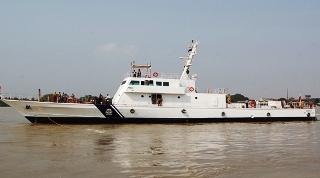
Artist's concept of Kepler-62f, a super-Earth-size planet in the habitable zone of a star smaller and cooler than the sun, located about 1,200 light-years from Earth in the constellation Lyra. Photo: NASA/Ames/JPL-Caltech.
PASADENA, CALIFORNIA (BNS): NASA's Kepler mission has discovered two new planetary systems that include three super-Earth-size planets in the "habitable zone."
The habitable zone is the range of distance from a star where the surface temperature of an orbiting planet might be suitable for liquid water.
The Kepler-62 system has five planets: 62b, 62c, 62d, 62e and 62f. The Kepler-69 system has two planets: 69b and 69c. Kepler-62e, 62f and 69c are the super-Earth-sized planets.
Two of the newly discovered planets orbit a star smaller and cooler than the sun. Kepler-62f is only 40 percent larger than Earth, making it the exoplanet closest to the size of our planet known in the habitable zone of another star, NASA said on its website.
Kepler-62f is likely to have a rocky composition. Kepler-62e orbits on the inner edge of the habitable zone and is roughly 60 percent larger than Earth.
The third planet, Kepler-69c, is 70 percent larger than the size of Earth, and orbits in the habitable zone of a star similar to the sun.
Astronomers are uncertain about the composition of Kepler-69c, but its orbit of 242 days around a sun-like star resembles that of planet Venus, the report said.
Scientists do not know whether life could exist on the newfound planets, but the discovery signals another step closer to finding a world similar to Earth around a star like our sun, it added.
The Kepler space telescope, which simultaneously and continuously measures the brightness of more than 150,000 stars, is NASA's first mission capable of detecting Earth-size planets around stars like the sun.
Orbiting its star every 122 days, Kepler-62e was the first of these habitable zone planets identified.
Kepler-62f, with an orbital period of 267 days, was later found by Eric Agol, associate professor of astronomy at the University of Washington and co-author of a paper on the discoveries published in the journal Science.
"We only know of one star that hosts a planet with life, the sun. Finding a planet in the habitable zone around a star like our sun is a significant milestone toward finding truly Earth-like planets," said Thomas Barclay, Kepler scientist at the Bay Area Environmental Research Institute in Sonoma, California, and lead authour of the Kepler-69 system discovery published in the Astrophysical Journal.
 Previous Article
Previous Article Next Article
Next Article












The Indian Air Force, in its flight trials evaluation report submitted before the Defence Ministry l..
view articleAn insight into the Medium Multi-Role Combat Aircraft competition...
view articleSky enthusiasts can now spot the International Space Station (ISS) commanded by Indian-American astr..
view article